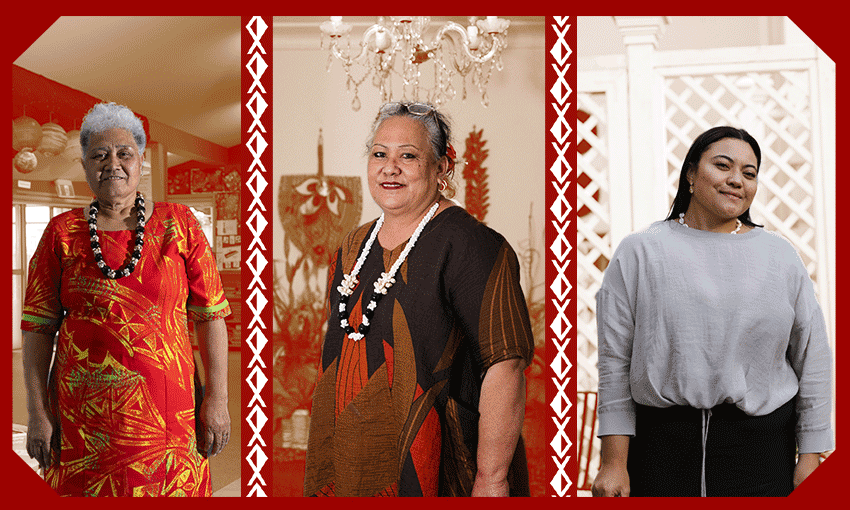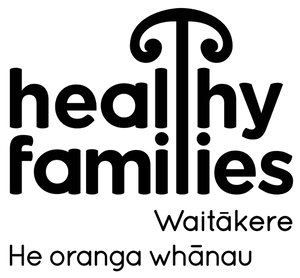At aoga amata, young children are taught entirely in Sāmoan. The centres support the Sāmoan language and its learners. But it’s an ageing sector, and current teachers worry there will be no one to continue their work.
Sāmoan is the third most commonly spoken language in Aotearoa, unsurprising given the steady flow of Sāmoan migrants since the 1950s. But while those who migrated in the 50s, 60s and 70s spoke Sāmoan as a primary language, their children learned English, with Sāmoan often only only at home and church, rarely written or learned in a structured setting. It’s those children’s children who are now in aoga amata, learning the Sāmoan language every day in a way few of their parents were able to. Aoga amata provide a service to Sāmoan parents, offering cultural knowledge and faith-based learning alongside the standard numeracy, literacy and play. But they’re also swimming upstream.
“We are fighting for the language here,” says Irene Paleai-Foroti, director of Sosaiete Aoga Amata Samoa i Aotearoa (SAASIA), the collective for aoga amata around New Zealand. “We’re fighting for our children to grow up and be competent in our own language.”
Use of the home language at school supports the language itself but also its learners. “It helps children become strong in their identity, language and culture. Thinking and learning are connected to language knowledge,” says Dr Rebecca Hopkins, who leads the postgraduate diploma in early childhood learning at AUT. “The more children hear and speak a language the more expansive their vocabulary becomes, which enables deeper thinking and more expressive communication, leading to confidence in themselves as learners.”
Aoga amata seek to serve a particular demographic, and the realities of that demographic (Pacific women are the lowest paid workers in the country) mean fees at Sāmoan language centres are cheaper than most mainstream centres, with a level of flexibility rarely offered elsewhere. The directors and teachers consider their work a community service, rather than a business, meaning tight margins and a lot of unbilled work.
The bulk of this work is being done by older women. Directors and head teachers are predominantly women in their 60s, sometimes 70s. “Pacific early learning services are an ageing sector,” says Paleai-Foroti, “So that’s our big concern, who is going to continue the work? If there’s no one that is fluent in the language to continue these early learning services, it’s a big concern. We’ve got an early childhood teacher right now. She’s going to be 80 this year, but she’s still teaching, because if she goes away, her centre will close.”
Current teachers are also in a shorter term bind. If they need to take a day off, students miss out on immersion. There’s a shortage of Sāmoan language relief teachers, too. There are teacher shortages across all school levels, from early childhood to secondary school, but aoga amata are especially struggling due to a confluence of factors, some that they’re now desperate to see changed.
One factor that comes up often is the International English Language Testing Systems (IELTS, pronounced “eye-elts”). The IELTS is an English language proficiency test that must be passed to an “academic” level in order to enrol in a graduate teaching diploma course (which leads to registration). It is this test, introduced as a prerequisite in 2015, that has proven to be one of the greatest barriers for potential Sāmoan early childhood education (ECE) teachers.
“Our teachers who needed to go through this are more than capable of teaching in Sāmoan, but they can’t always get through this process that is underpinned by a Western testing system,” says Ella Falakoa, Pacific strategy lead at Healthy Families Waitākere. Falakoa and the team at Healthy Families Waitākere work with aoga amata to drive systemic change for teacher wellbeing. They have been hearing about the IELTS barrier from faiaoga (teachers) since 2020, “Different words, worldviews, ways of understanding things don’t always translate to exact English words,” Falakoa says.
The test is not easy. Split into four parts (listening, reading, writing, speaking), it tests beyond comprehension of the English language. Online practice tests include spoken questions that use language like “excursions” (instead of “trips”), phrasing like “we designed questionnaires which were devised to elicit…” and idioms such as “stay the course”. It’s language that would trip up the average native English speaker, let alone someone who’s learned English as a second language. Those who don’t pass to an “academic” level can’t enter the teaching programme.
Paleai-Foroti didn’t have to sit the IELTS because she studied in the 90s, but knows all about it from teacher aides. “When I took my degree at UoA, if there was an IELTs there, I wouldn’t have gotten in,” she says. “But now I’ve got my masters and I’ve been a lecturer at AUT.” Hopkins agrees.
This difficult test also impacts funding. Staff at ECE centres can be registered teachers, teacher aides undergoing training or simply unregistered. Funding, though, is tied to the number of qualified teachers at a centre. “The more qualified teachers you have the more funding your centre will get. But because of the teacher shortage ECEs take a funding hit,” Hopkins notes. Without enough funding, existing teachers often end up doing unpaid labour to close the gap but this leads to burnout and retention issues which only worsen shortages.
Sofaea Penn is the centre manager at Seugagogo Aoga Amata, where teacher aides are doing incredible (unfunded) work but struggling to get registered. “They all have expertise in ECE. We need those people with expertise in the language,” she says. “We employ them and try our best to keep them at a living wage where they can look after their families.”
With funding and resources limited and many current qualified teachers nearing retirement, kids have to be turned away from aoga amata. And the first to be declined are those with higher needs. “I’ve had to turn down three kids and my heart broke for them, because they should be in our aoga but I can’t take them on because we don’t have enough teachers.”
Healthy Families Waitākere, Hopkins from AUT and those working in aoga amata all agree that the IELTS is preventing capable Sāmoan language teachers from entering the workforce. “It’s blocking them at the start,” says Penn. The degree itself is taught in English so a level of proficiency is required to pass anyway. “Why not let them get in? If they pass, obviously they can write and learn in English,” says Paleai-Foroti.
In May, the Teaching Council of Aotearoa New Zealand opened consultation on proposed changes to the language competency policy. Specifically, it proposed adding a Pacific language competency component for those speaking and teaching in indigenous Pacific languages, as well as allowing more flexibility in meeting the English language competency requirements (such as completing prior schooling in English). A spokesperson for the Teaching Council said they are “advocating for a change in the legislation that would enable the Council to consider registering teachers in languages other than English and Te Reo Māori”.
The Teaching Council is now assessing feedback from the sector, and aoga amata staff and parents are waiting with bated breath. Paleai-Foroti sums up the current registration process for Sāmoan full immersion ECE teachers. “It stops our people from thriving. We want to see our language and culture survive.”
Many factors are contributing to this teacher shortage. At a minimum, the removal of this prohibitive testing requirement would reduce the barrier to entry for the new teachers required to keep Sāmoan and Pacific island language nests going. As that one teacher celebrates her 80th birthday soon, she might be able to retire with greater confidence that her work will be carried on.

